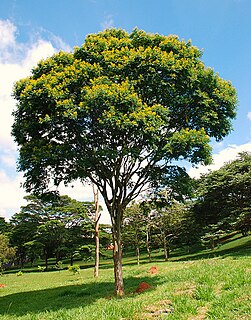
The Iron Crown is a reliquary and may be one of the oldest royal insignia of Christendom. It was made in the Early Middle Ages, consisting of a circlet of gold and jewels fitted around a central silver band, which tradition held to be made of iron beaten out of a nail of the True Cross. In the medieval Kingdom of Italy, the crown came to be seen as a relic from the Kingdom of the Lombards and was used as regalia for the coronation of the Holy Roman Emperors as kings of Italy. It is kept in the Cathedral of Monza, near Milan.
On October 14, 1912, former saloonkeeper John Flammang Schrank (1876–1943) attempted to assassinate former US President Theodore Roosevelt while he was campaigning for the Presidency in Milwaukee, Wisconsin. Schrank's bullet lodged in Roosevelt's chest after penetrating Roosevelt's steel eyeglass case and passing through a thick single-folded copy of the speech titled "Progressive Cause Greater Than Any Individual", which he was carrying in his jacket. Schrank was immediately disarmed, captured, and might have been lynched had Roosevelt not shouted for Schrank to remain unharmed. Roosevelt assured the crowd he was all right, then ordered police to take charge of Schrank and to make sure no violence was done to him. As an experienced hunter and anatomist, Roosevelt correctly concluded that since he was not coughing blood, the bullet had not reached his lung, and he declined suggestions to go to the hospital immediately. Instead, he delivered his scheduled speech with blood seeping into his shirt. He spoke for 90 minutes before completing his speech and accepting medical attention. His opening comments to the gathered crowd were, "Ladies and gentlemen, I don't know whether you fully understand that I have just been shot, but it takes more than that to kill a Bull Moose."

Franz von Paula Schrank was a German priest, botanist and entomologist.

Mesua ferrea, the Ceylon ironwood, or cobra saffron, is a species in the family Calophyllaceae. This slow-growing tree is named after the heaviness and hardness of its timber. It is widely cultivated as an ornamental due to its graceful shape, grayish-green foliage with a beautiful pink to red flush of drooping young leaves, and large, fragrant white flowers. It is native to wet, tropical parts of Sri Lanka, India, southern Nepal, Burma, Thailand, Indochina, the Philippines, Malaysia and Sumatra, where it grows in evergreen forests, especially in river valleys. In the eastern Himalayas and Western Ghats in India it grows up to altitudes of 1,500 m (4,900 ft), while in Sri Lanka up to 1,000 m (3,300 ft). It is national tree of Sri Lanka, state tree of Mizoram and state flower of Tripura.

Libidibia ferrea, formerly Caesalpinia ferrea, and commonly known as pau ferro, Jucá, Brazilian ironwood, morado, or leopard tree, is a tree found in Brazil and Bolivia.

Stagonomus venustissimus, common name woundwort shieldbug, is a species of shieldbug belonging to the family Pentatomidae, subfamily Pentatominae.

Eurygaster is a genus of shield bugs widespread in Eurasia; some in North America.

Macrophya is a genus of sawfly.

Cimbex is a genus of sawflies in the family Cimbicidae.

Nagkesar oil is extracted from seeds of the nagkesar tree. It belongs to the Calophyllaceae family. It is an East Indian evergreen tree and is often planted as an ornamental for its fragrant white flowers that yield a perfume. It is the source of hardwood used for railroad ties. It is Sri Lanka's national tree.

Hypocassida is a genus of leaf beetles belonging to the subfamily Cassidinae.

Phytoecia is a genus of longhorn beetles of the subfamily Lamiinae, containing the following species:

Stenostola is a genus of longhorn beetles of the subfamily Lamiinae, containing the following species:

Phytoecia pustulata is a species of beetle in the family Cerambycidae. It was described by Schrank in 1776, originally under the genus Cerambyx. It has a wide distribution throughout Europe and the Middle East.
Stenostola anomala is a species of beetle in the family Cerambycidae. It was described by Henry Walter Bates in 1884. It is known from Japan.

Stenostola dubia is a species of beetle in the family Cerambycidae. It was described by Laicharting in 1784, originally under the genus Saperda. It has a wide distribution throughout Europe. It feeds on Juglans regia and Corylus avellana.
Stenostola niponensis is a species of beetle in the family Cerambycidae. It was described by Maurice Pic in 1901.

Stagonomus is a genus of shieldbug belonging to the family Pentatomidae, subfamily Pentatominae.

Cimbex connatus, also known by its common name large alder sawfly is a species from the genus Cimbex. The species was originally described by Franz Paula von Schrank in 1776.
Neoascia annexa is a species of hoverfly in the family Syrphidae.














